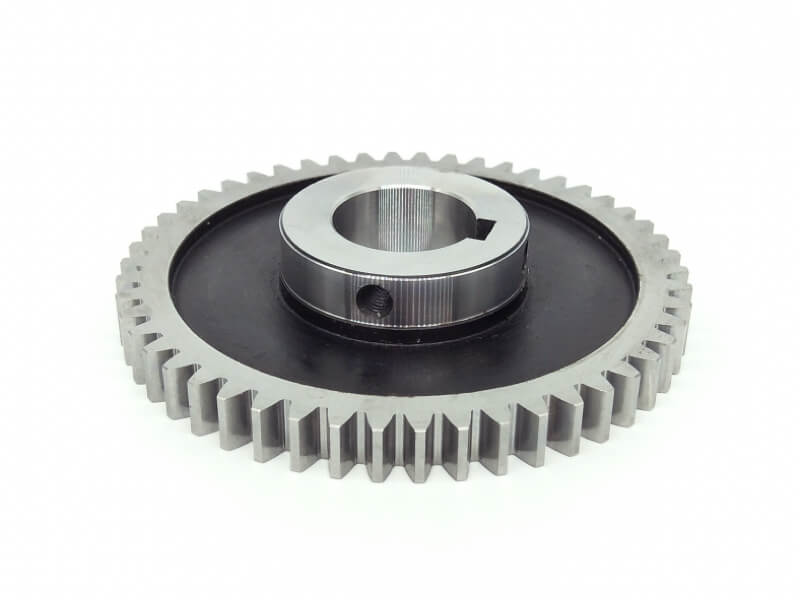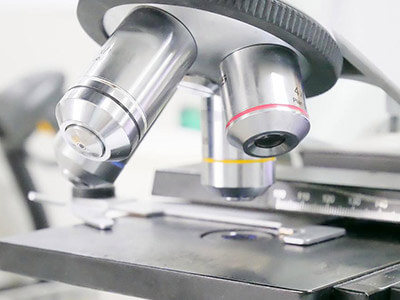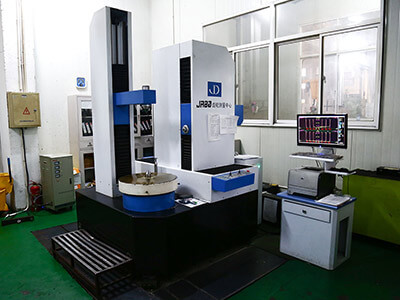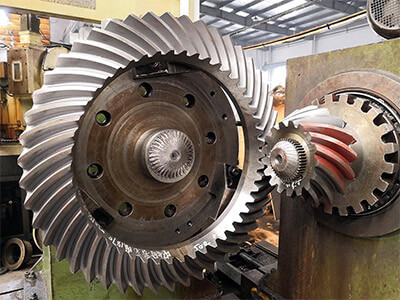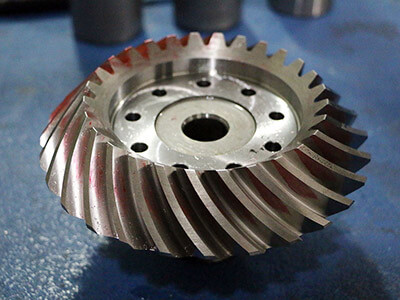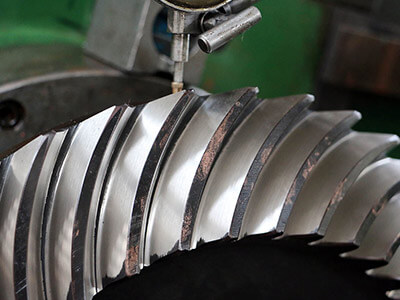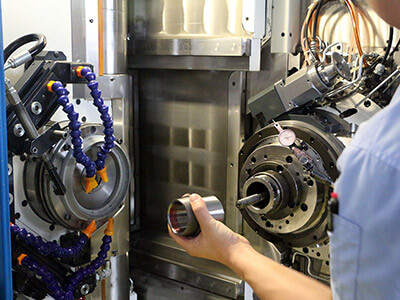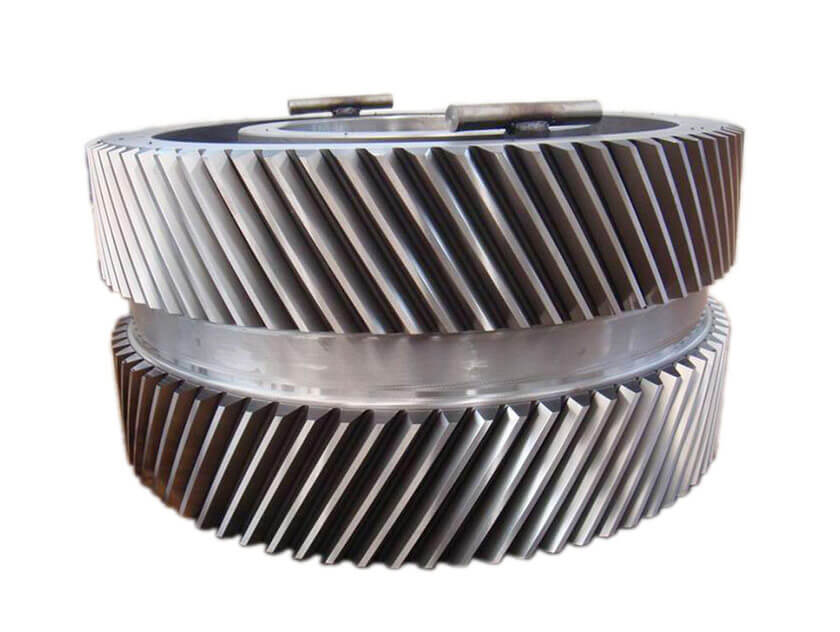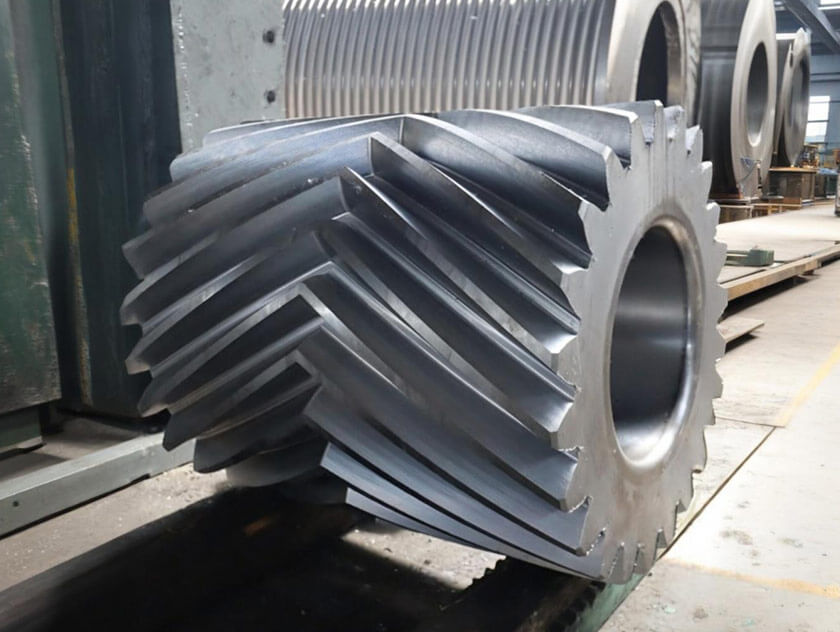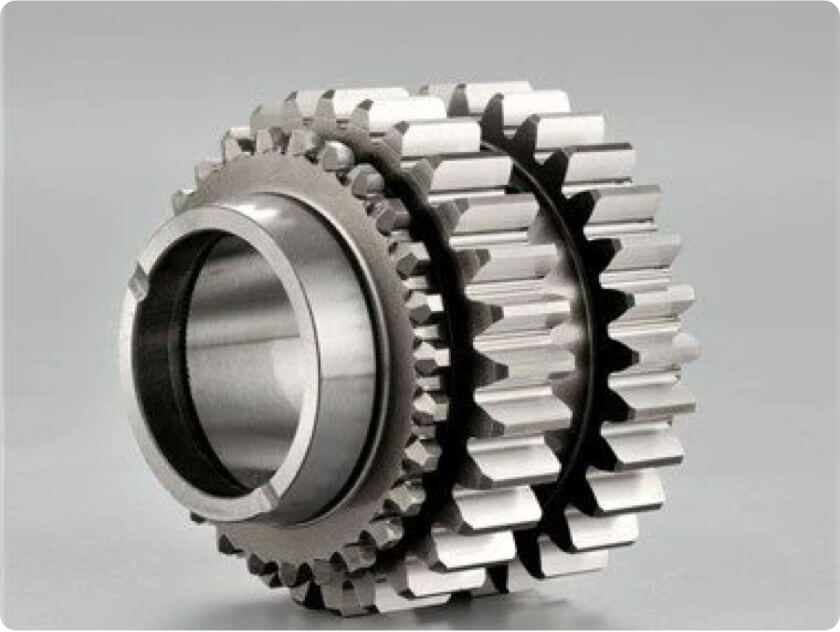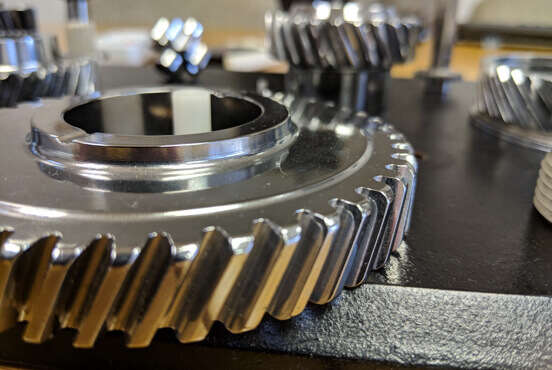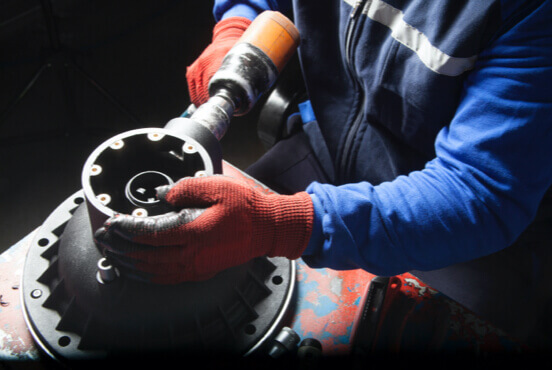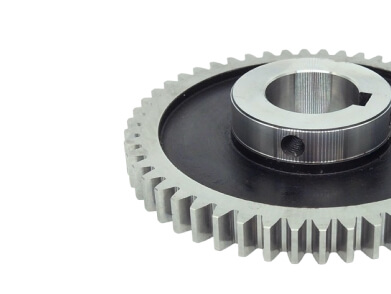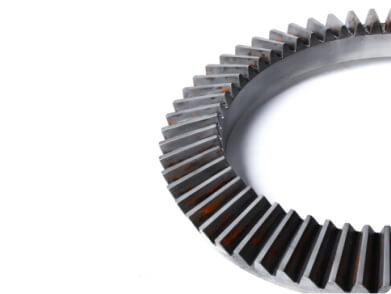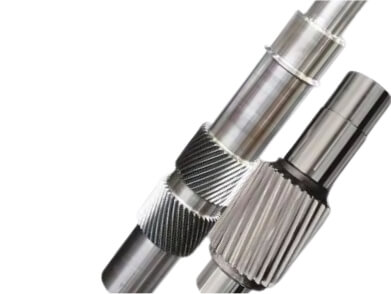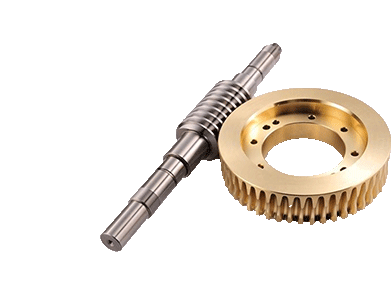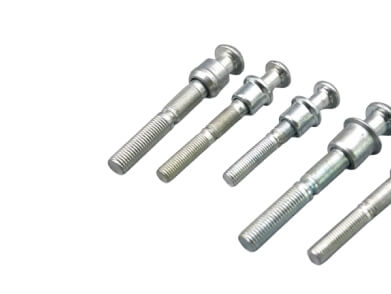Helical Gear Description
Helical gears are a type of gear characterized by their angled teeth, which are cut at a specific angle to the gear’s axis, forming a helix shape. The features and benefits are similar to spur gears but can be a better option when higher velocities are needed.
Compared to spur gears, helical gears have greater tooth strength and a higher load carrying capacity. The inclined tooth design leads to a larger contact area during meshing, which helps to distribute loads more evenly, making helical gears capable of handling higher loads and torques.
Classification of helical gear:
Single Helical Gears: Have teeth that are oriented in a single direction.
Double Helical Gears (Herringbone Gears): Have two sets of teeth oriented in opposite directions, which cancel out axial thrust.
Advantages of Double Helical Gears
Reduced Noise and Vibration
Herringbone gears operate more smoothly, generating less noise and vibration compared to single helical gears.
Higher Load Capacity
The ability to carry larger loads makes them suitable for heavy-duty applications.
Compact Design
The double helical gear design can be more compact than comparable gear configurations, allowing for smaller housing sizes.
Improved Efficiency
The dual set of teeth allows for smoother engagement and disengagement, resulting in increased efficiency
Manufacturing Method of Helical Gear
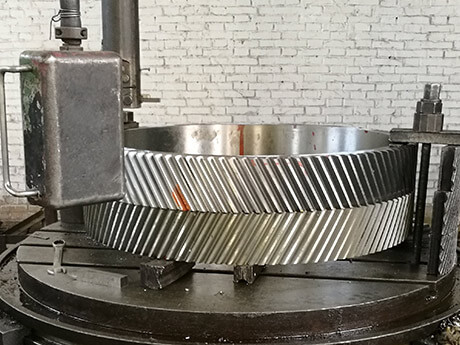
Gear Hobbing
Description: A gear cutting process that uses a hob (a specialized cutting tool) to shape the gear teeth.
Advantages: Suitable for high-volume production; efficient and cost-effective for manufacturing gears with complex tooth profiles.
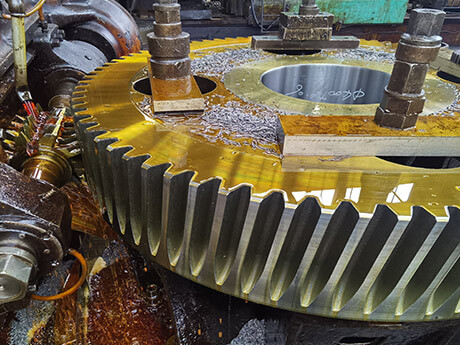
Gear Shaping
Description: Involves a shaping machine that uses a reciprocating cutter to remove material and form the gear teeth.
Advantages: Can produce gears of various sizes and tooth profiles; effective for low-volume runs and custom gears.
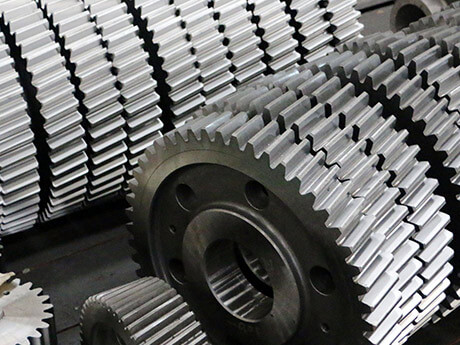
Gear Milling
Description: Uses a milling machine to cut the gear teeth. This method is often used for smaller gears or specialized shapes.
Advantages: Versatility in producing different gear types and sizes; can be used for both prototype and production runs.
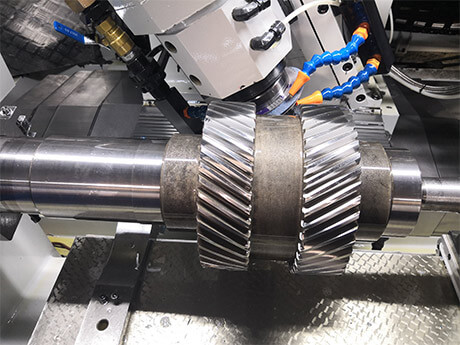
Gear Grinding
Description: Involves using a grinding wheel to refine the tooth profile and achieve precise dimensions and surface finishes.
Advantages: Provides high accuracy and smooth surface finishes; often used as a secondary process after hobbing or shaping.
Common Steel Code
Grades Comparison
| CHINA/GB | ISO | ГΟСТ | ASTM | JIS | DIN |
| 45 | C45E4 | 45 | 1045 | S45C | CK45 |
| 40Cr | 41Cr4 | 40X | 5140 | SCr440 | 41Cr4 |
| 20CrMo | 18CrMo4 | 20ХМ | 4118 | SCM22 | 25CrMo4 |
| 42CrMo | 42CrMo4 | 38XM | 4140 | SCM440 | 42CrMo4 |
| 20CrMnTi | 18XГT | SMK22 | |||
| 20Cr2Ni4 | 20X2H4A | ||||
| 20CrNiMo | 20CrNiMo2 | 20XHM | 8720 | SNCM220 | 21NiCrMo2 |
| 40CrNiMoA | 40XH2MA/40XHMA | 4340 | SNCM439 | 40NiCrMo6/36NiCrMo4 | |
| 20CrNi2Mo | 20NiCrMo7 | 20XH2MA | 4320 | SNCM420 | |
| 17CrNiMo6 | |||||
| 18CrNiMo7 |
Common Heat Treatment Process
Heat treatment is a controlled process used to alter the physical and sometimes chemical properties of materials, particularly metals. It can enhance properties such as hardness, strength, toughness, and ductility. Here are some common heat treatment processes:
01
Annealing
Purpose
To soften the material, improve ductility, and relieve internal stresses.
Process
Heating the metal to a specific temperature and then cooling it slowly, usually in air or in a furnace.
02
Quenching
Purpose
To increase hardness and strength.
Process
Heating the metal to a high temperature and then rapidly cooling it in water, oil, or air. This process can induce stresses in the material.
03
Tempering
Purpose
To reduce brittleness after quenching and improve toughness.
Process
Heating the quenched metal to a lower temperature (below its critical point) and then cooling it, which allows for some of the internal stresses to be relieved.
04
Normalizing
Purpose
To refine the grain structure and enhance mechanical properties.
Process
Heating the steel above its critical temperature and allowing it to cool in air. This results in a uniform microstructure.
05
Hardening
Purpose
To increase hardness and wear resistance.
Process
Involves quenching, followed by tempering to achieve desired hardness levels, commonly applied to tool steels.
06
Case Hardening
Purpose
To harden the surface of a material while maintaining a softer, ductile core.
Process
Methods include carburizing (adding carbon) or nitriding (adding nitrogen) to the surface layer, followed by quenching.
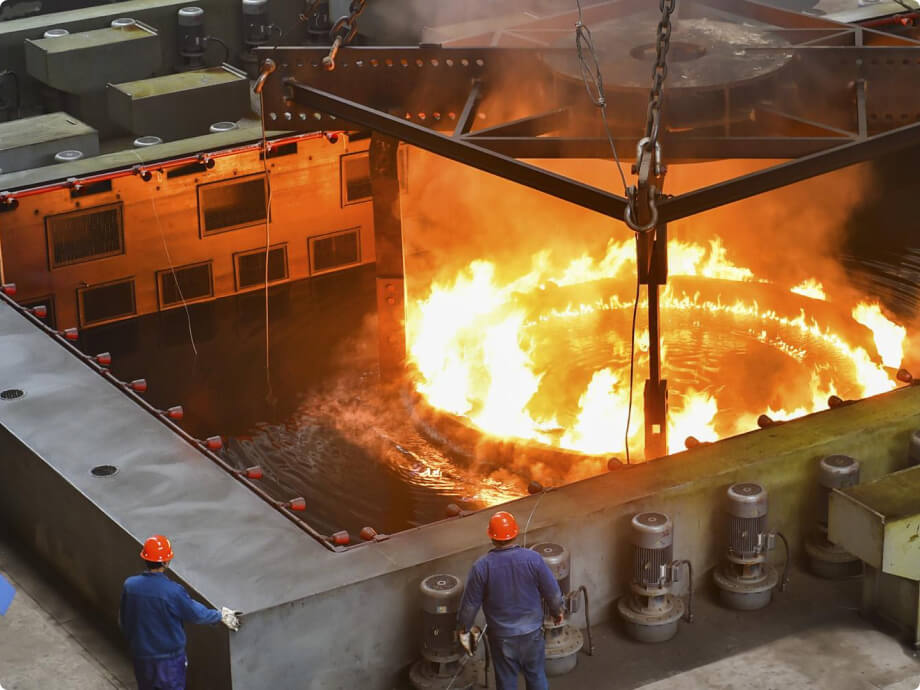

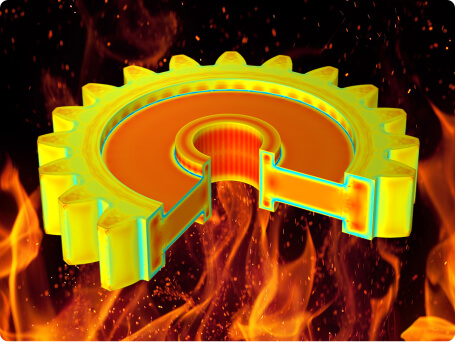
Manufacturing Capacity of Helical Gear
| Item | Description |
| Gear Type | Helical Gear |
| Module (m) | Max 35 |
| DP | 0.75 |
| Pressure angle (α) | 20 Deg/14.5 Deg |
| Helix angle (β) | Max 35 Deg |
| Number of teeth (z) | |
| Facewidth (b) | 800mm |
| Profile shift coefficient (x) | Customized |
| Reference diameter (d) | Customized |
| Face width (b) | Max 8 Meter |
Quality Control of Helical Gear
Quality control is essential in the manufacturing of spur gears to ensure they meet specified standards and function effectively in their applications. The following are key aspects and methods used in the quality control process for spur gears:

